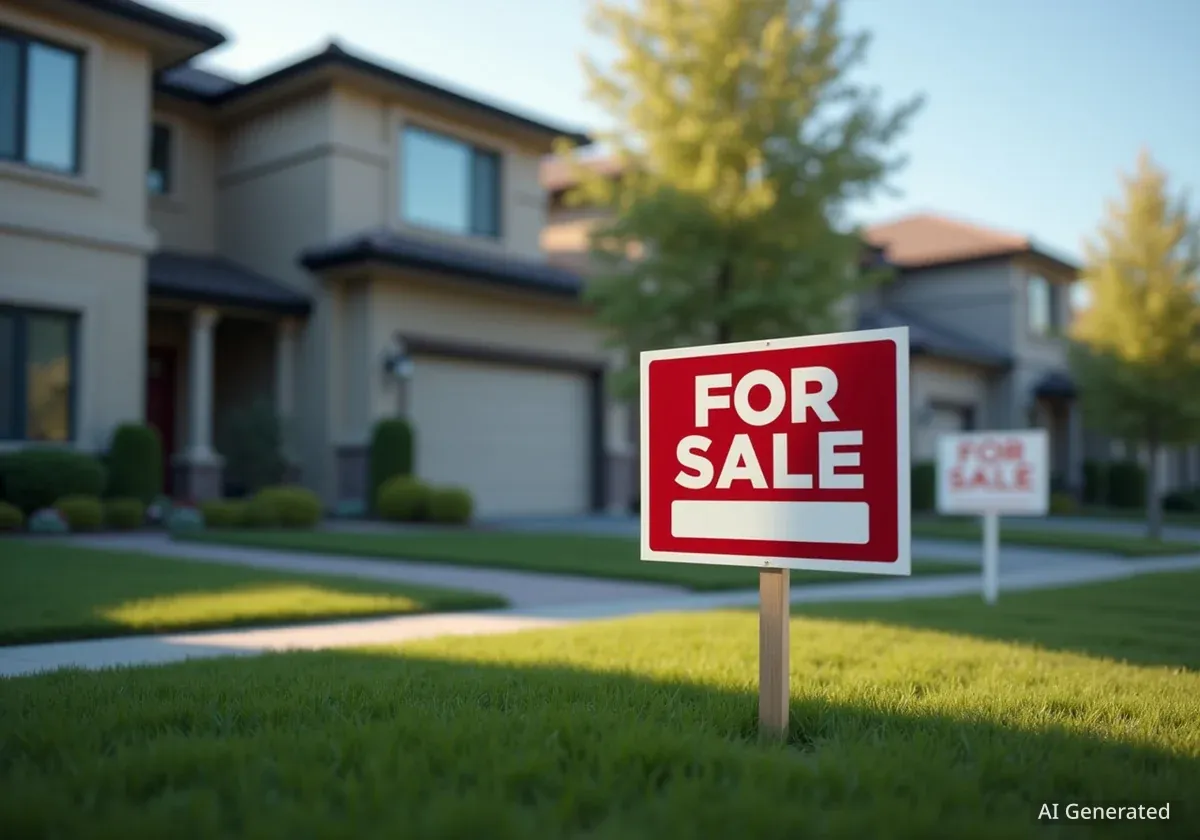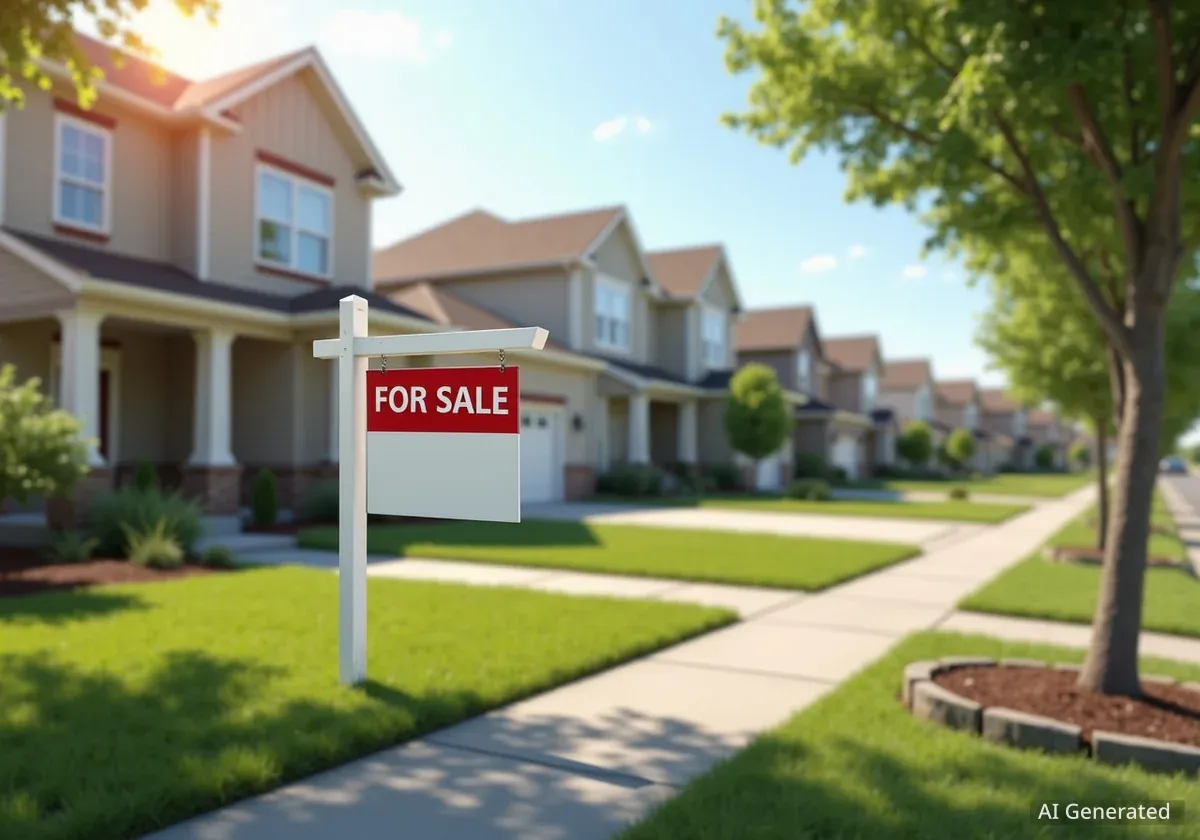The United States housing market is experiencing a notable increase in the number of homes for sale, yet this rise in supply has not translated into a surge of buyer activity. Data from October 2025 shows that while inventory is up significantly compared to last year, persistent affordability challenges and higher mortgage rates are causing many potential buyers to remain on the sidelines, creating a market with more options but slower sales momentum.
Key Takeaways
- Total active housing inventory increased by 15.1% compared to the same period last year.
- Despite more homes being available, the pace of sales has slowed, with properties remaining on the market for an average of 63 days.
- Median list prices have remained flat year-over-year, but the price per square foot has declined for five consecutive weeks, suggesting underlying price pressure.
- Higher mortgage rates continue to be a major barrier for buyers, limiting their purchasing power and tempering demand.
Inventory Swells but Sales Pace Falters
Recent figures indicate a significant shift in the U.S. housing landscape. The total number of homes available for sale has climbed 15.1% year-over-year, providing buyers with more choices than they have seen in recent times. According to data from Realtor.com®, there were approximately 1.1 million active listings nationwide as of October 4, 2025.
However, this increase in inventory is not solely due to a flood of new sellers. A key factor is that existing listings are simply taking longer to sell. This dynamic has caused the overall inventory level to rise even as the rate of new listings has shown more modest growth.
Understanding the Inventory Data
The growth in active inventory outpacing new listings indicates a slowdown in market churn. While more homes were listed in the first week of October compared to previous weeks, the overall trend points to a market where properties are not being purchased as quickly as they were a year ago. This suggests that the supply is growing primarily because demand is not keeping pace.
Hannah Jones, a senior economic research analyst at Realtor.com®, highlighted this trend. She noted that the faster growth in active inventory compared to new listings is a clear sign that homes are sitting on the market for longer periods. This also reflects a reluctance from homeowners to sell, many of whom are holding onto mortgages with historically low interest rates.
Affordability Remains a Major Hurdle for Buyers
The primary reason for the subdued buyer activity is the ongoing challenge of affordability. While the increase in housing supply is a positive development for buyers in terms of choice, elevated mortgage rates continue to strain budgets and limit purchasing power. Many potential buyers are finding it difficult to qualify for loans or afford the monthly payments on homes, even as price growth has stalled.
This has created a paradoxical situation: the market has more to offer, but fewer people are in a position to buy. The result is a slowdown in transaction volume, with many would-be buyers adopting a "wait-and-see" approach in hopes of more favorable financial conditions.
"Homes continue to spend more time on the market than last year, and prices remain flat, signaling higher inventory and lower competition."
This lower competition gives buyers who can afford to purchase a home more leverage. Bidding wars have become less common in most parts of the country, and buyers have more time to conduct due diligence before making an offer.
Price Trends Signal a Cooling Market
On the surface, home prices appear stable, with the national median list price showing no change compared to the same week in 2024. However, a closer look at the data reveals signs of underlying weakness in home values. The price per square foot has decreased by 0.5% year-over-year, marking the fifth consecutive week of declines for this metric.
Price Per Square Foot: A Key Indicator
The price per square foot is often considered a more accurate measure of underlying home value than the median list price, as it adjusts for the size and composition of homes on the market. A consistent decline in this figure suggests that sellers are adjusting their expectations in response to weaker demand.
According to Jones, this shift is significant. "Price per square foot grew steadily for almost two years, but the weak sales activity has finally caught up and shaken underlying home values despite stable prices," she explained. This indicates that while sellers are not yet making drastic cuts to their asking prices, the market's fundamental valuation is softening.
Homes Linger on the Market Longer
A clear indicator of the market slowdown is the time it takes for a home to sell. The typical home now spends approximately 63 days on the market before being sold. This is a significant increase from the fast-paced markets of the past few years and is more aligned with pre-pandemic norms from 2017-2019.
This extended time on the market has important implications for sellers. As properties sit for longer, sellers may become more motivated to negotiate or reduce their asking price to secure a deal, especially as the year-end approaches.
"As homes spend longer on the market, sellers are more likely to reduce their asking price, eager to close a sale before the end of the year," Jones observed. This trend could lead to more price reductions in the coming months if demand does not pick up.
What This Means for Buyers and Sellers
The current market presents a complex set of opportunities and challenges for both buyers and sellers.
For Homebuyers:
- More Options: The 15.1% rise in inventory means a wider selection of homes to choose from.
- Less Competition: The likelihood of entering a bidding war has decreased significantly in most areas.
- Negotiating Power: With homes staying on the market longer, buyers may find more room for negotiation on price and terms.
- Affordability Constraints: High mortgage rates remain the biggest obstacle, impacting monthly payments and overall budgets.
For Home Sellers:
- Patience is Required: Homes are taking longer to sell, so sellers should prepare for a longer marketing period.
- Pricing is Critical: Setting a competitive and realistic price from the outset is more important than ever.
- Flexibility is Key: Sellers may need to be more open to negotiation and consider offers that are below their initial asking price.
While the national market is generally cooling, it is important to note that real estate remains highly localized. Some markets, particularly in parts of the Midwest and Northeast, continue to experience relatively strong demand and quicker sales, highlighting the varied conditions across the country.





